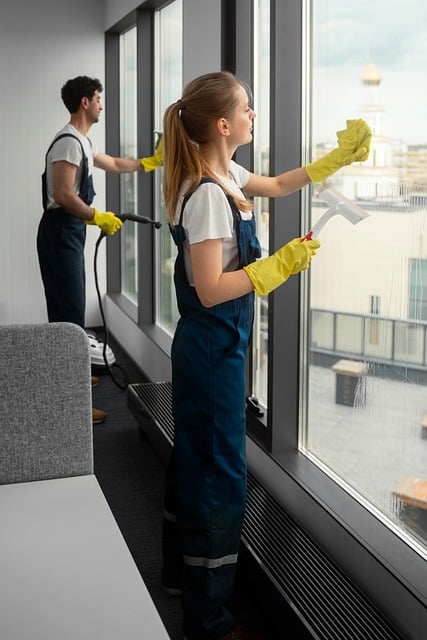The Clean Revolution: Are Smart Cleaning Technologies Ready to Run Your Facility?
The global commercial cleaning market is projected to reach $111.4 billion by 2027, driven in large part by technological innovation and demand for higher standards of hygiene. Traditional cleaning approaches face persistent challenges in the US market: labor shortages, variable cleaning quality across shifts, and rising operational costs. Smart cleaning technology — combining automation, robotics, and the Internet of Things (IoT) — is emerging as a viable solution that enables data-driven, predictable, and scalable facility management.

The commercial cleaning industry is undergoing a dramatic transformation as facilities worldwide grapple with evolving demands for cleanliness, efficiency, and cost-effectiveness. Smart cleaning technologies are no longer futuristic concepts but practical solutions being deployed across various sectors to address real-world challenges.
Understanding the Global Commercial Cleaning Market Landscape
The global commercial cleaning market has experienced remarkable expansion, driven by increased awareness of hygiene standards and regulatory requirements across industries. Healthcare facilities, educational institutions, corporate offices, and retail spaces are investing heavily in professional cleaning services and advanced equipment. This growth reflects not only higher cleanliness standards but also the recognition that proper facility maintenance directly impacts productivity, health outcomes, and brand reputation.
Market analysts project continued growth as businesses prioritize workplace safety and environmental sustainability. The shift toward green cleaning practices and energy-efficient equipment has created new opportunities for technology integration, making smart cleaning solutions increasingly attractive to facility managers seeking competitive advantages.
How Smart Cleaning Technology is Reshaping Operations
Smart cleaning technology encompasses a broad range of innovations designed to enhance efficiency, reduce costs, and improve cleaning outcomes. These systems integrate sensors, artificial intelligence, and connectivity features to create more responsive and data-driven cleaning operations.
Robotic floor cleaners equipped with mapping technology can navigate complex layouts while collecting performance data. IoT sensors monitor restroom usage patterns, enabling cleaning teams to respond proactively rather than following rigid schedules. UV disinfection systems provide chemical-free sanitization, while smart dispensers track consumption patterns and alert staff when supplies need replenishment.
These technologies offer significant advantages including consistent cleaning quality, reduced chemical usage, and detailed reporting capabilities that help facility managers optimize their operations and demonstrate compliance with health and safety standards.
Addressing Critical Labor Shortages Through Automation
Labor shortages have become a persistent challenge across the cleaning industry, with many facilities struggling to maintain adequate staffing levels. High turnover rates, physically demanding work conditions, and competitive wage pressures have created ongoing recruitment difficulties that smart cleaning technologies can help address.
Autonomous cleaning systems can handle routine tasks like floor maintenance, allowing human workers to focus on specialized cleaning activities that require judgment and flexibility. This approach doesn’t necessarily eliminate jobs but rather transforms them, creating opportunities for workers to develop technical skills in equipment operation and maintenance.
Facilities implementing smart cleaning technologies often report improved job satisfaction among cleaning staff, as workers spend less time on repetitive tasks and more time on meaningful problem-solving activities. This shift can help attract and retain quality employees while maintaining high cleaning standards.
Evaluating Autonomous Cleaning Systems for Your Facility
Autonomous cleaning systems represent one of the most visible aspects of smart cleaning technology, with robotic floor cleaners, window washing systems, and UV disinfection units becoming increasingly sophisticated. These systems offer 24/7 operation capabilities, consistent performance standards, and detailed operational data.
When evaluating autonomous systems, facility managers should consider factors including building layout complexity, traffic patterns, and integration requirements with existing operations. Some systems excel in large, open spaces while others are designed for navigating around obstacles and furniture. Battery life, maintenance requirements, and staff training needs also influence implementation success.
The most effective autonomous cleaning systems complement rather than replace human workers, creating hybrid operations that leverage the strengths of both automated efficiency and human adaptability.
Cost Analysis and Technology Investment Considerations
Implementing smart cleaning technologies requires significant upfront investment, but many facilities find that operational savings and improved outcomes justify the costs over time. Initial equipment purchases, installation, training, and ongoing maintenance represent the primary expense categories.
| Technology Type | Provider Examples | Cost Estimation | Key Features |
|---|---|---|---|
| Robotic Floor Cleaners | Tennant, Nilfisk, ICE Robotics | $15,000-$50,000 | Autonomous navigation, data collection |
| UV Disinfection Systems | Xenex, Tru-D, UVD Robots | $80,000-$150,000 | Chemical-free sanitization, mobile units |
| IoT Monitoring Systems | Procter & Gamble Professional, Kimberly-Clark | $5,000-$25,000 | Real-time usage tracking, supply management |
| Smart Dispensers | Georgia-Pacific, SCA Hygiene | $200-$800 per unit | Usage analytics, automated alerts |
Prices, rates, or cost estimates mentioned in this article are based on the latest available information but may change over time. Independent research is advised before making financial decisions.
Return on investment typically occurs within 2-4 years through reduced labor costs, improved efficiency, and decreased supply waste. However, facilities should also consider intangible benefits including improved cleaning consistency, enhanced data collection capabilities, and competitive advantages in attracting tenants or customers who prioritize cleanliness standards.
Integration Challenges and Implementation Strategies
Successful smart cleaning technology implementation requires careful planning and stakeholder buy-in. Common challenges include staff resistance to change, integration with existing systems, and ensuring reliable connectivity throughout facilities.
Effective implementation strategies begin with pilot programs that demonstrate value before full-scale deployment. Staff training and change management initiatives help ensure smooth transitions, while phased rollouts allow for adjustments based on real-world performance data.
Facility managers should also establish clear performance metrics and monitoring protocols to track technology effectiveness and identify optimization opportunities. Regular evaluation ensures that smart cleaning investments continue delivering expected benefits as facility needs evolve.
Smart cleaning technologies offer compelling solutions to many challenges facing today’s facility managers, from labor shortages to efficiency demands. While implementation requires careful planning and significant investment, facilities that successfully integrate these technologies often achieve improved outcomes, reduced costs, and enhanced competitive positioning. The key lies in selecting appropriate technologies for specific facility needs and ensuring proper implementation support for both equipment and personnel.




